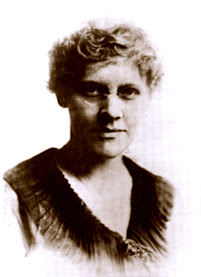 "Deplore loss (of) much-loved, greatly admired Juliet Thompson, outstanding, exemplary handmaid (of) 'Abdu'l-Baha. Over half-century record (of) manifold meritorious services, embracing concluding years (of) Heroic (and) opening decades (of) Formative Age (of) Baha'i Dispensation, won her enviable position (in) glorious company (of) triumphant disciples (of) beloved Master (in) Abha Kingdom. Advise hold memorial gathering (in) Mashriqu'l-Adhkar (to) pay befitting tribute (to the) imperishable memory (of) one (was) so wholly consecrated (to) Faith (of) Baha'u'llah (and) fired (with) such consuming devotion (to) Center (of) His Covenant.
"Deplore loss (of) much-loved, greatly admired Juliet Thompson, outstanding, exemplary handmaid (of) 'Abdu'l-Baha. Over half-century record (of) manifold meritorious services, embracing concluding years (of) Heroic (and) opening decades (of) Formative Age (of) Baha'i Dispensation, won her enviable position (in) glorious company (of) triumphant disciples (of) beloved Master (in) Abha Kingdom. Advise hold memorial gathering (in) Mashriqu'l-Adhkar (to) pay befitting tribute (to the) imperishable memory (of) one (was) so wholly consecrated (to) Faith (of) Baha'u'llah (and) fired (with) such consuming devotion (to) Center (of) His Covenant.
(signed) Shoghi
December 6, 1956
At an early age Juliet became interested in painting. She studied at the Corcoran Art School in Washington and at seventeen was doing portraits in pastels professionally. By the middle 1890's, when in her early twenties, she had already made a name for herself.
Around the turn of the century the mother of Laura Clifford Barney invited the young artist to come to Paris for further study. Juliet went accompanied by her mother and brother.
It was there that she met May Bolles – the first Baha'i on the European continent – and through her, accepted this new Faith. Mrs. Barney wrote of Juliet that she had accepted it "as naturally as a swallow takes to the air.''








